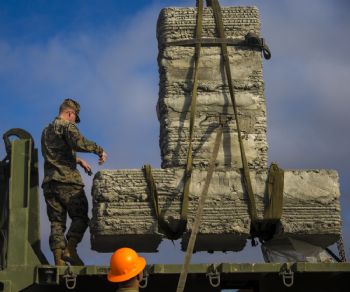
The US Army Corps of Engineers’ Construction Engineering Research Laboratory (CERL) in Champaign, Illinois, has been testing a 3ft-wide and 33ft-long foot bridge (built by eight Marines in about six days).
The development team was hoping that the structure would accommodate the 15,000lb load it was designed to withstand; in fact, it did not crack until a load of nearly 45,000lb was reached.
Programme manager Mike Case said: “It really exceeded the design strength by quite a bit, proving that we have a valid way to construct structural members like bridges.”
CERL (
www.erdc.usace.army.mil) has been 3-D printing with concrete since 2015, starting with a simple shelter and a guard shack.
In 2017, it 3-D printed a barracks with straight walls; last year, it printed another barracks with angled walls that was twice as strong — with only 10-15% more concrete.
Megan Kreiger, the ‘printing leader’ on the project, says that the 3-D printer works more or less like those used in schools and colleges, but instead of printing layers of plastic, it prints layers of concrete.
“The fundamentals of the technology are essentially the same, but instead of using a plastic filament, we are using a concrete pump and a hose; and because concrete is heavier than plastic and doesn’t solidify as quickly, there is a limit to the shapes that can be built.
"Each layer is about an inch thick, cures after a few minutes and is relatively strong after 24hr. Essentially, we can continuously print a structure from the bottom to the top.”